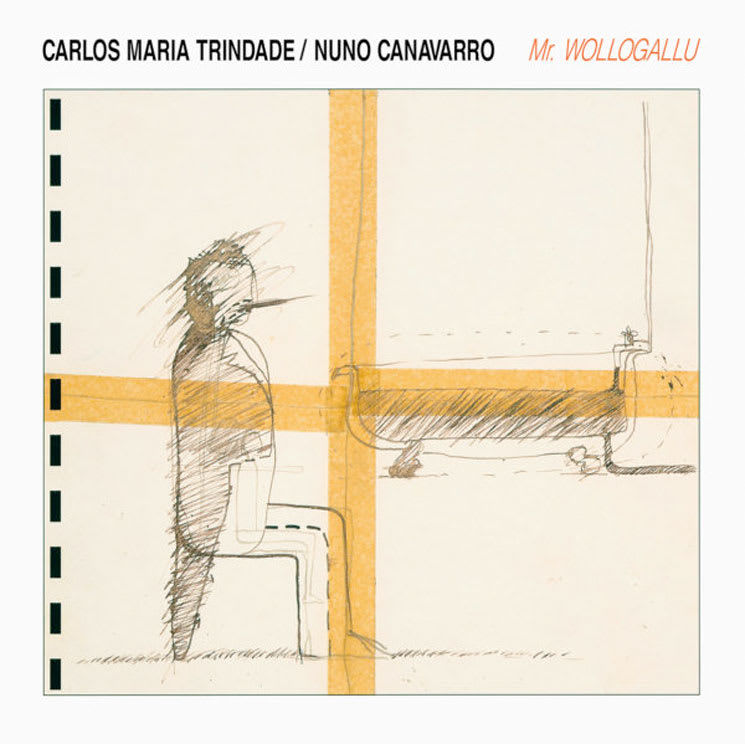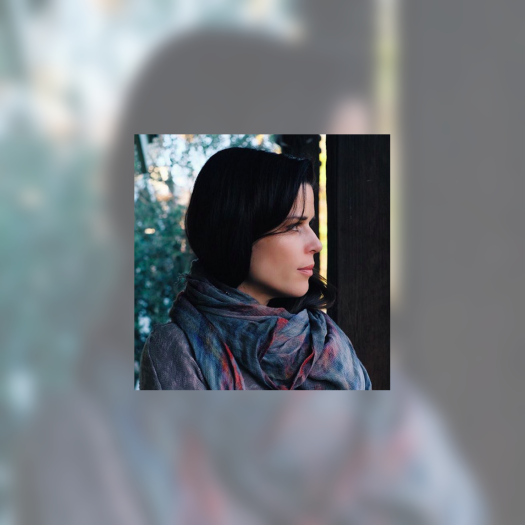Portuguese composer Nuno Canavarro stands as one of the most underrated yet brilliant figures in the world avant-garde electronic music. As anyone who has immersed themselves in his 1988 masterpiece Plux Quba will tell you, Canavarro's ambient-laced compositions stand as a truly unique pieces of work, combining free-flowing electro-acoustic soundscapes with pre-IDM electronics of an entirely foreign yet comforting nature. And while his Plux Quba has rightly been reissued in recent years, Canavarro's frustratingly elusive follow-up Mr. Wollogallu is at last getting a much-deserved re-release.
On January 16, newly formed Barcelona-based label Urpa i musell will reissue Mr. Wollogallu, which was a joint album between Nuno Canavarro and Carlos Maria Trindade. This will the album's first vinyl release since it initially came out in Portugal on União Lisboa, Produções Audiovisuais Lda. in 1991.
The new pressing will be limited to a first edition of 1,000 copies on vinyl. It has been mastered by Yves Roussel, preserving the original artwork and adding a new insert with liner notes by Mia B.
As Urpa i musell explains, the collaboration began when manager António Cunha, who was also a mutual friend of both musicians, brought Canavarro and Trindade together. Despite never working together previously, the resulting Mr. Wollogallu is stunning, to say the least, and has gone on to become cult classic in the world of ambient and experimental music world, primarily through simply word of mouth and some serious cheerleading by experimental hero Jim O'Rourke.
Of course, original copies of Mr. Wollogallu now fetch a pretty penny on site like Discogs.
Down below, you can read an in-depth description of the history behind Mr. Wollogallu provided by the label. Also, at the bottom of the page, you can stream a sampler containing snippets of the album, as well as pre-order the release here.
The conception and recording of Mr. Wollogallu took quiet a long time. Both luminaries would convene in a home studio during the first half of 1990, brainstorming together with calm, care, and love. The sessions resulted in this collaborative record. Although the A side is credited to Carlos Maria and the B side to Nuno, everything was done hand in hand, each artist taking active part in the other's side.
After the release of the record and some live performances together, each musician set out on separate paths: Carlos Maria joined the internationally renowned band Madredeus, while Nuno concentrated on making music for documentaries and feature films. As such, this record is evidence of a unique, magical moment.
When Mr. Wollogallu was released, it went mostly unnoticed; the public reaction was not as enthusiastic as one might expect. It was an ouvre ahead of its time, difficult, winding, and diffuse, one that would take years to become more widely accepted. After a second release on CD in 1996, the album was finally praised in an important article published January 2000 in the supplement Sons of the Portuguese newspaper Público, in which the influential music journalist Fernando Magalhães traced the history of Electronic music in Portugal — by then Nuno Canavarro's Plux Quba had become more recognized worldwide, thanks to a 1998 reissue on Jim O'Rourke's label Moikai. At the end of the article, Mr. Wollogallu appeared on a list of ten fundamental national Electronic records. Apart from the media's contribution, word of mouth among music lovers around the world has also been crucial in amplifying the record's fame and status.
Carlos Maria and Nuno created everlasting music that contains an undeniable, enchanting mystery. Mr. Wollogallu features sophisticated, adventurous soundscapes that depict, in a manner both blurry and clear at the same time, ancient maps, distant travels and evocative landscapes, an alchemy of the acoustic and the electronic, created using techniques that were unusual at the time.
On January 16, newly formed Barcelona-based label Urpa i musell will reissue Mr. Wollogallu, which was a joint album between Nuno Canavarro and Carlos Maria Trindade. This will the album's first vinyl release since it initially came out in Portugal on União Lisboa, Produções Audiovisuais Lda. in 1991.
The new pressing will be limited to a first edition of 1,000 copies on vinyl. It has been mastered by Yves Roussel, preserving the original artwork and adding a new insert with liner notes by Mia B.
As Urpa i musell explains, the collaboration began when manager António Cunha, who was also a mutual friend of both musicians, brought Canavarro and Trindade together. Despite never working together previously, the resulting Mr. Wollogallu is stunning, to say the least, and has gone on to become cult classic in the world of ambient and experimental music world, primarily through simply word of mouth and some serious cheerleading by experimental hero Jim O'Rourke.
Of course, original copies of Mr. Wollogallu now fetch a pretty penny on site like Discogs.
Down below, you can read an in-depth description of the history behind Mr. Wollogallu provided by the label. Also, at the bottom of the page, you can stream a sampler containing snippets of the album, as well as pre-order the release here.
The conception and recording of Mr. Wollogallu took quiet a long time. Both luminaries would convene in a home studio during the first half of 1990, brainstorming together with calm, care, and love. The sessions resulted in this collaborative record. Although the A side is credited to Carlos Maria and the B side to Nuno, everything was done hand in hand, each artist taking active part in the other's side.
After the release of the record and some live performances together, each musician set out on separate paths: Carlos Maria joined the internationally renowned band Madredeus, while Nuno concentrated on making music for documentaries and feature films. As such, this record is evidence of a unique, magical moment.
When Mr. Wollogallu was released, it went mostly unnoticed; the public reaction was not as enthusiastic as one might expect. It was an ouvre ahead of its time, difficult, winding, and diffuse, one that would take years to become more widely accepted. After a second release on CD in 1996, the album was finally praised in an important article published January 2000 in the supplement Sons of the Portuguese newspaper Público, in which the influential music journalist Fernando Magalhães traced the history of Electronic music in Portugal — by then Nuno Canavarro's Plux Quba had become more recognized worldwide, thanks to a 1998 reissue on Jim O'Rourke's label Moikai. At the end of the article, Mr. Wollogallu appeared on a list of ten fundamental national Electronic records. Apart from the media's contribution, word of mouth among music lovers around the world has also been crucial in amplifying the record's fame and status.
Carlos Maria and Nuno created everlasting music that contains an undeniable, enchanting mystery. Mr. Wollogallu features sophisticated, adventurous soundscapes that depict, in a manner both blurry and clear at the same time, ancient maps, distant travels and evocative landscapes, an alchemy of the acoustic and the electronic, created using techniques that were unusual at the time.




